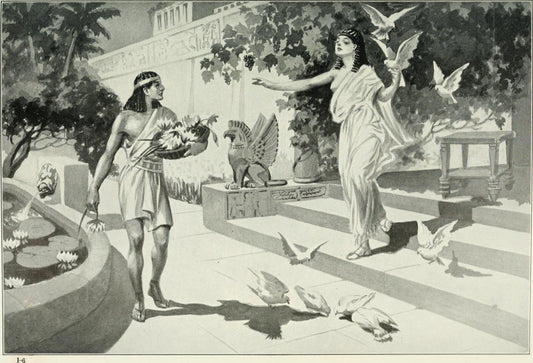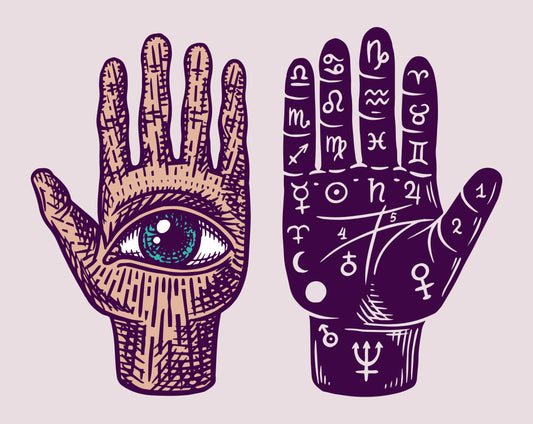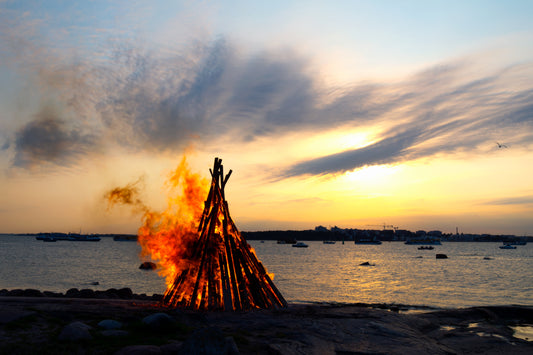Imbolc - Spring is Coming!
February 1st marks the start of Imbolc, a historically Pagan-celebrated halfway point between winter and spring. This holiday dates back to ancient times according to early Irish literature, and we believe it was celebrated widely throughout Ireland, Scotland, and the Isle of Man.

Occurring three months after Samhain and the onset of Winter, Imbolc is a symbol of the beginning of Spring and something of a sister holiday.
How did Imbolc start?
Like most holidays, Imbolc began long ago as something far different than it became. Over centuries and centuries, the meaning has transformed, taking on new symbols and significance with every shift.
The earliest evidence we have supporting a long history behind this holiday is several Neolithic passage tombs in Ireland aligned with the sunrise during the times of Samhain and Imbolc. The alignment of both of these dates together is rare enough that scholars argue it can't be coincidence.
At some point, this pagan festival shifted to center around honoring the goddess Brigid. Brigid is said to have lived in the 6th century. She founded the Kildare monastery and has been the focus of a lot of Irish folklore. Saint Brigid is the Christianized version, both of which are associated with poetry, healing, blacksmithing, training and domesticating animals, and most importantly, wisdom. The festival of Imbolc celebrated the onset of spring, and promoted Brigid as a goddess of fertility.
Imbolc Traditions
Details about the feasts and festivals taking place on this day were not well-recorded until recent centuries, so we lack a detailed understanding of the complete history of the holiday. However, accounts from early modern history speak of a troop of girls parading Brigid's crosses and a doll-like figurine from house to house accompanied by "strawboys." They believed Brigid visited homes during the night of February 1st, and to honor her and receive blessings, people would make a bed for her and leave food and drinks. They would leave out clothing in the hopes she would bless them and protect their homes and families. People would also visit holy wells and take water back to bless the home and fields in preparation for the new season.

Imbolc was a significant time for pagans to practice divination, one type being weather divination. The tradition was to watch for serpents and badgers emerging from winter homes. This tradition is similar to Groundhog Day, and scholars believe they are connected.

Scottish Gaelic Proverb about Imbolc:
Thig an nathair as an toll
Là donn Brìde,
Ged robh trì troighean dhen t-sneachd
Air leac an làir.
Translated:
The serpent will come from the hole
On the brown Day of Bríde,
Though there should be three feet of snow
On the flat surface of the ground.
Cailleach
In Gaelic mythology, Cailleach is the divine hag said to create the landscape and weather. She plays an important role in an Imbolc tradition of determining the completion of winter. The myth says that if there is much of winter remaining, Cailleach would spend her February 1st collecting firewood to keep warm until the sun made it's true return. If she needed to collect firewood, she would make the weather nice that day to ease her working.

If the weather is bad on February 1st, people were relieved because it meant Cailleach is sleeping and thus, not needing firewood signaling winter is finally almost over.
How is Imbolc celebrated today?
Imbolc is observed by both Christians and non-Christians. Some still make crosses for Brigid and visit the old holy wells. Brigid's Day parades are still celebrated in Killorglin, where men and women in straw hats and masks parade around with Brigid dolls and crosses.
Modern celebrators also celebrate outside of Killorglin. It is a loose holiday associated with reconnecting with nature, releasing old energy, and preparing for the warmer months. Some modern Wiccans use fire rituals to uphold the integrity of the original Celtic festival.

How can modern pagans celebrate Imbolc?
Plenty of things you can do if you are interested! The best way to prepare for the oncoming of spring is to spend some time enjoying the last of winter, so get outside and feel that shiver!
You can also make offerings to Brigid to encourage a blessed and fruitful springtime. Milk products are traditional, or you can offer a poem or a song. If you are feeling crafty, make a straw cross or other symbol and hang it for protection.
A symbol of Imbolc is purification, and this may be the root of the term "Spring Cleaning!" Clean your house to celebrate the oncoming spring and the end of winter.

Whether you are celebrating Imbolc or not, the shift of the seasons is a great time to reflect on the past season, release what needs to be released, and clean out energy for the oncoming. Meditate on your goals for the warmer season, get excited about the return of the leaves and the flowers, and enjoy the last of the snow!




